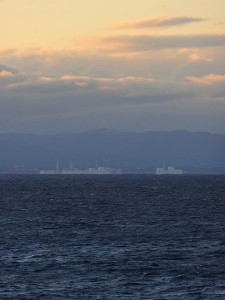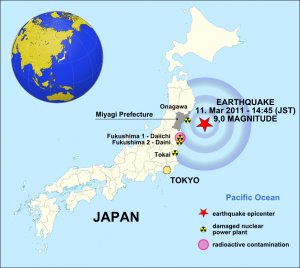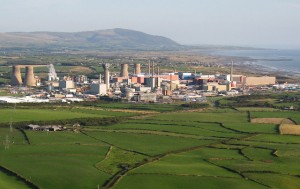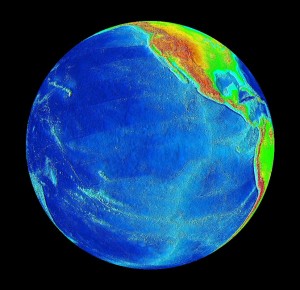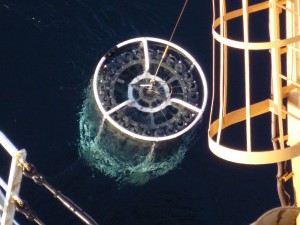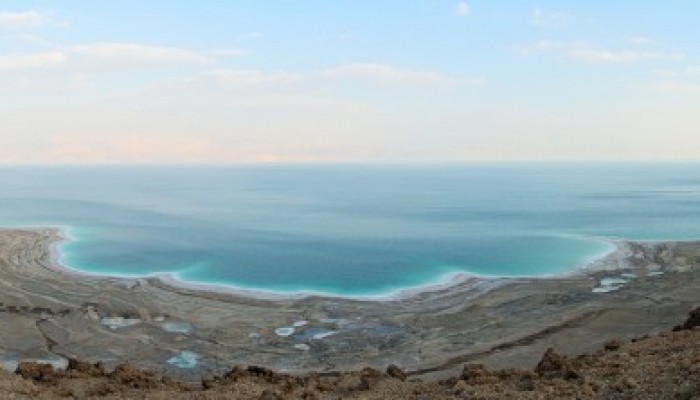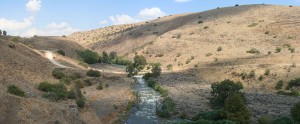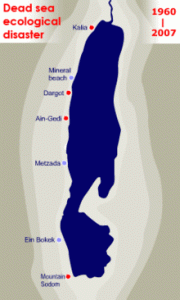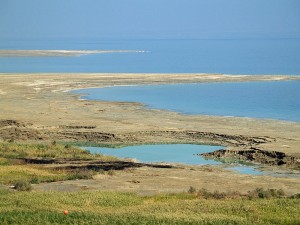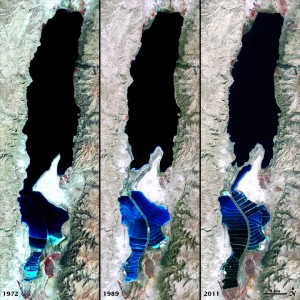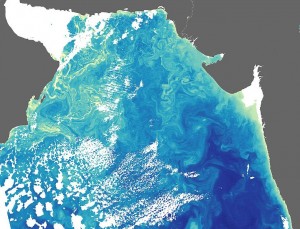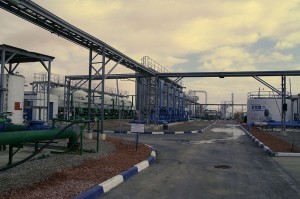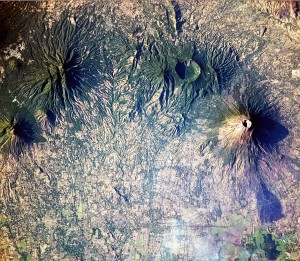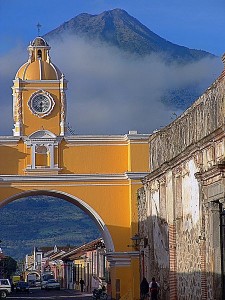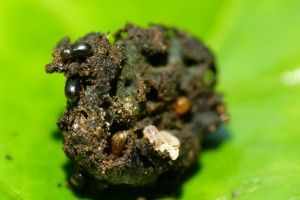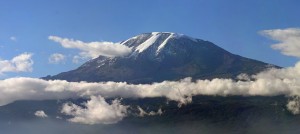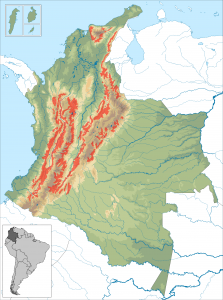From London to Warsaw and Tokyo: Flo Bullough and Marion Ferrat discuss some of last month’s hot topics in the climate and policy world.
News
UN Warsaw Climate Talks
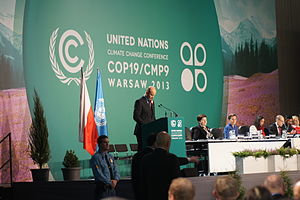
United Nations Climate Change COP19 Conference. Source – Wikimedia Commons
The UN’s Climate Change Conference in Warsaw concluded this week at the end of a 30-hour deadlock in decision making over the wording of the final deal. After a series of controversies including hunger strikes, walkouts and standoffs the meeting ended with the a deal hammered out. Countries have until early 2015 to publish their plans on curbing greenhouse gas emissions. There was also much discussion over the ‘Loss and Damage’ framework: delegates agreed to set up a compensation mechanism. Under the agreement, countries will receive some aid if hit by natural disasters but developed countries won’t be considered liable, and the fund won’t start functioning until 2020, the Guardian reported. See the link for more information.
Carbon Brief: Warsaw climate negotiations achieve nuggets of progress but defer major decisions: http://www.carbonbrief.org/blog/2013/11/warsaw-climate-negotiations-achieve-nuggets-of-progress,-but-defer-major-decisions/
On the back of the conference, Nature published an editorial reviewing the state of the world’s climate targets. Despite certain drawbacks and the general gloomy feeling about political action on climate change, they concluded: “there is reason for hope”.
House of Lords report on Scientific Infrastructure
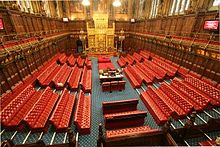
House of Lords Chamber. Source – UK Parliament, Wikimedia Commons.
Earlier in the summer, the House of Lords Science and Technology Committee launched an inquiry into Scientific Infrastructure. The inquiry was launched to collect evidence on large and medium-sized scientific infrastructure currently available in the UK. It aimed to consider the future needs and strategic planning, funding and governance arrangements, international partnerships and partnerships with industry. The final report for this inquiry has now been launched and highlights the following geo-relevant areas.
– The significant investment and the success of the Diamond Light Source Synchrotron facility
– The varied and sophisticated nature of work done by the following important NERC funded institutions
- British Antarctic Survey, British Geological Survey, Centre for Ecology and Hydrology, National Centre for Atmospheric Science, National Centre for Earth Observation and the National Oceanography Centre
House of Lords Publication on Scientific Infrastructure: http://www.publications.parliament.uk/pa/ld201314/ldselect/ldsctech/76/76.pdf
20 things policy makers need to know about science and 20 things scientists need to know about policy-makers!
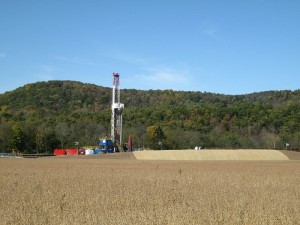
Science and policy have collided on contentious issues such as shale gas, these tips attempt to help both sides of the process! Source – Ruhrfisch, Wikimedia Commons.
British and Australian scientists put together a list of tips that could help policy-makers and politicians which was published in Nature. These include the importance of bias sample size, randomization and data dredging. By way of response, there was also a ‘Top 20’ of things scientists need to know about policy making written by Chris Tyler at the Guardian.
Nature: Twenty tips for interpreting scientific claims: http://www.nature.com/news/policy-twenty-tips-for-interpreting-scientific-claims-1.14183
The Guardian: Top 20 things politicians need to know about science: http://www.theguardian.com/science/2013/nov/20/top-20-things-politicians-need-to-know-about-science
The Guardian: Top 20 things scientists need to know about policy-making: http://www.theguardian.com/science/2013/dec/02/scientists-policy-governments-science
Japan scales back on climate change emissions targets
The Japanese government has scaled back its emissions targets after deciding the 25% reduction was too unrealistic. The shift back to coal, oil and gas for power following the Fukishima disaster has hindered recent progress in reductions.
Phys Org: Japan dials back climate change emissions target: http://phys.org/news/2013-11-japan-dials-climate-emissions.html
USGS to monitor water usage in thermoelectric power generation
In line with the ongoing interdependence between water and energy, the United States Geological Survey announced they are to start reporting water usage during thermoelectric power generation in order to quantify the contribution of this energy source to the overall use of water.
USGS Newsroom: Water watch for electric energy production: http://www.usgs.gov/newsroom/article.asp?ID=3735&from=rss
Typhoon Haiyan
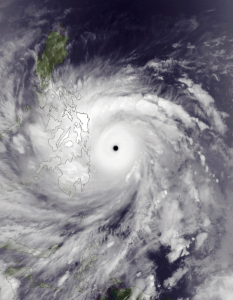
Satellite image of Typhoon Haiyan. Source – NASA, Wikimedia Commons.
Typhoon Haiyan hit Southeast Asia in early November: an exceptionally powerful tropical cyclone that devastated portions of Southeast Asia, particularly the Philippines, It is the deadliest Philippine typhoon on record,killing at least 5,632 people in that country alone. There has been much discussion about the sometime assumed contribution of climate change to the disaster although this is rejeteced by many scientists.
Nature: Did climate change cause Typhoon Haiyan? http://www.nature.com/news/did-climate-change-cause-typhoon-haiyan-1.14139
Budget hits keeling curve
The Scripps Institution of Oceanography in California is seeking donations to maintain the historic ‘Keeling Curve’; a 55-year record of rising CO2 levels following years of lack of funding.
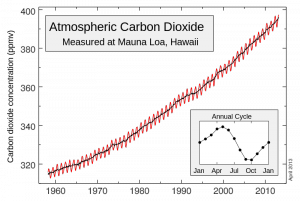
The Keeling Curve: Atmospheric CO2 concentrations as measured at Mauna Loa Observatory. Source – Narayanese, Wikimedia Commons
Nature: Budget crunch hits keeling curve: http://www.nature.com/news/budget-crunch-hits-keeling-s-curves-1.14206
Impacts of U.S. Shutdown on Earth and Space Science
The effect of the US Government shutdown for 16 days in October had
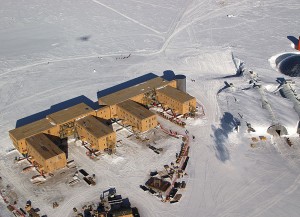
Amundsen-Scott South Pole Station. Source – U.S. Antarctic Program, National Science Foundation.
far reaching consequences; not least for research institutes and programs. Amongst the research funding casualties was the Antarctic research program. US research programs such as the NOAA, NASA and USGS were all impacted. Eos magazine produced by AGU assessed the impact on the Earth Science Community
Eos: Impact on Earth and Space Science: http://sites.agu.org/wp-content/uploads/2013/10/pdf-of-Govt-Shutdown-story.pdf
Washington Post: Impact on Antarctic Research program: http://www.washingtonpost.com/national/health-science/us-government-shutdown-stalls-antarctic-research/2013/11/17/7f7e9af4-4e2b-11e3-be6b-d3d28122e6d4_story.html
Research Highlights
Crusty algae unravel history of Arctic sea ice
The first high-resolution proxy for Arctic sea ice cover has been discovered.
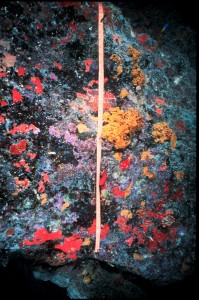
Demosponges and coralline algae – Source: K. Rasmussen, Wikimedia Commons.
Long-lived algae living on the Arctic seafloor and build up as tree-ring-like structures on calcified rocks and record centuries of sea-ice history. Their sensitivity to both water temperature and sunlight is reflected in the algae’s growth rates and Mg/Ca ratio. The 646-year record discovered shows that sea-ice cover has seen the steepest decline in the past 150 years, with the 20th century characterised by the lowest area of sea-ice since the 14th century.
High-resolution palaeo-records of Arctic sea-ice are crucial to assess pre-anthropogenic changes in ice cover and complement the satellite observation data available for the last few decades only.
Proc. Natl Acad. Sci. USA http://doi.org/p6g (2013).
20th century warming driven by humans
Human activities are responsible for temperature changes in the 20th century, a new study has shown.
Francesco Estrada and his team used state-of-the art statistical methods to assess the link between temperature, radiative forcing and CO2 emissions over the past century. They showed that temperature changes have been largely driven by atmospheric CO2 concentrations, with a pronounced increase around 1960.
The results also revealed that human activities have driven periods of global warming slowdown, such as the warming ‘hiatus’ observed since the 1990s.
Their study shows that reducing greenhouse gas emissions is an effective way to curb short-term climate warming.
Nature Geosci. doi:10.1038/ngeo1999 (2013).
Natural aerosols matter for climate models
A good understanding of natural aerosol emissions is necessary to better quantify the effects of human activities
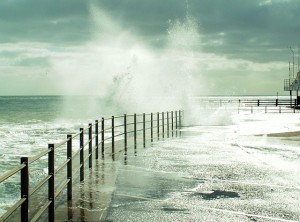
Sea spray on Broadstairs Pier – Source: Rose and Trev Clough, Wikimedia Commons.
on cloud radiative forcing, and therefore climate change.
A study published in Nature showed that uncertainties in the emissions of natural aerosols such as volcanic sulphur dioxide, biogenic volatile organic carbon and sea spray account for almost half of the variability of modelled aerosol radiative forcing.
The results demonstrate the importance of understanding the effects of aerosols on climate in pre-industrial environments, where the impacts of natural aerosols can be studied in detail. This will be important to subsequently reduce model uncertainties of radiative effects in present-day polluted environments.
Nature doi:10.1038/nature12674 (2013).
Around EGU
Radioactive waters, Four Degrees – Marion writes on how radioactive elements make their way to the world’s oceans – and how scientists can use them to study important processes that go on in our waters.
Raising the dead sea, Four Degrees – Flo writes on what can be done to replenish the Dead Sea and
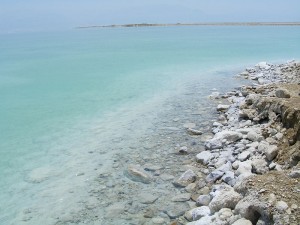
Dead Sea, Ein Boqeq. Source – xta11, Wikimedia Commons.
how it fits in with the region’s complex geopolitics.
Geo-Talk on GeoLog – Flo talks about policy and science communication on GeoLog.
Geology for Global Development – GfGD posted a piece on the role that both science and academia have in successfully bringing together stakeholders in areas where co-operation is essential, but challenging in areas such as Afghanistan, Pakistan and Iran.
Events
Grantham Institute Annual Lecture: Professor Thomas Stocker
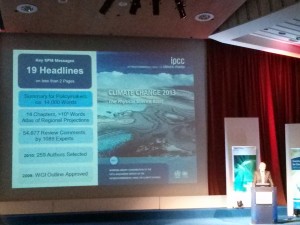
Professor Thomas Stocker at the Grantham Institute Annual Lecture, Imperial College London – Source: Marion Ferrat.
- Four Degrees went down to the Grantham Institute for Climate Change Annual Lecture at Imperial College London last week, given by Professor Thomas Stocker, co-chair of the IPCC working group 1. He gave a very thorough and clear talk about the latest IPCC report and the importance of climate targets with a clear message that we need to act now to tackle climate change.
Imperial College news: Act now to limit climate change says climate expert at Grantham Annual Lecture: 1http://www3.imperial.ac.uk/newsandeventspggrp/imperialcollege/naturalsciences/climatechange/newssummary/news_28-11-2013-11-8-22. Professor Stocker also talks about the public perception of climate change and many aspects of the IPCC report in this Nature Climate Change interview.
Rational Parliament Debate: Fracking and Shale Gas
- The most recent debate held by the new intiative Rational Parliament was on the topic of fracking and shale gas, see their blog for the details on the discussion and results of the votes of the event held in London on the 26th November. – http://rationalparliament.wordpress.com/2013/11/27/words-and-photos-from-our-debate-on-fracking/
ESA Launch Swarm
- On the 22nd November, ESA’s three-satellite Swarm constellation was launched. For four years, it will monitor the Earth’s magnetic field, from the depth of our planet’s core to the heights of its upper atmosphere. http://www.esa.int/Our_Activities/Observing_the_Earth/Swarm/ESA_s_Swarm_trio_on_its_way_to_watch_over_our_planet_s_magnetic_shield
Flo and Marion

